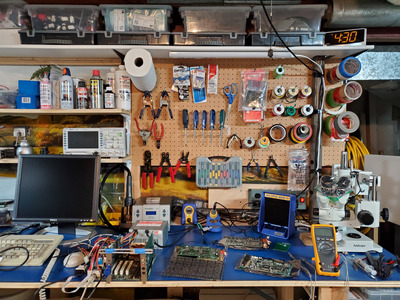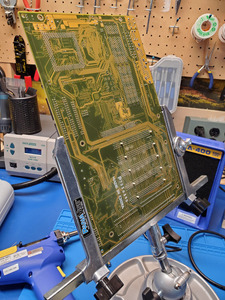First post, by Imito
Here is a list of things i have been buying to prepare myself with the job on repairing old pc hardware. Perhaps someone here can guide me if i am missing some.
List of basic things to buy :
1) You need a soldering station, One with hot air would be nice too.
2) Different models of soldering iron tips would also be nice to have
3) Flux
4) A lot of Isopropyl Alcohol
5) Desoldering braid
6) Soldering tin
List of extra things that would be nice to have
1) a USB microscope (i don´t have one yet but i think it would be good for soldering)
2) Magnify googles? vs magnifying glass? ( i bought these https://www.amazon.com/YOCTOSUN-Rechargeable- … /dp/B07T4KPYN2/ but they are not good, maximum zoo is 3.5x
4) Soldering UV mask
5) UV lamp, to cure the mask
6) a mini pen Drill
List of things to buy if you are full of money
- A desoldering Gun (costs a lot)
- Desoldering tweezers for smd components. (costs even more)
there is one thing i want to learn: how do you fix broken traces, what kind of copper wire do you buy, and that diameter should that wire have. Because 30AWG wire used for modchips is too big and its not made of copper.

